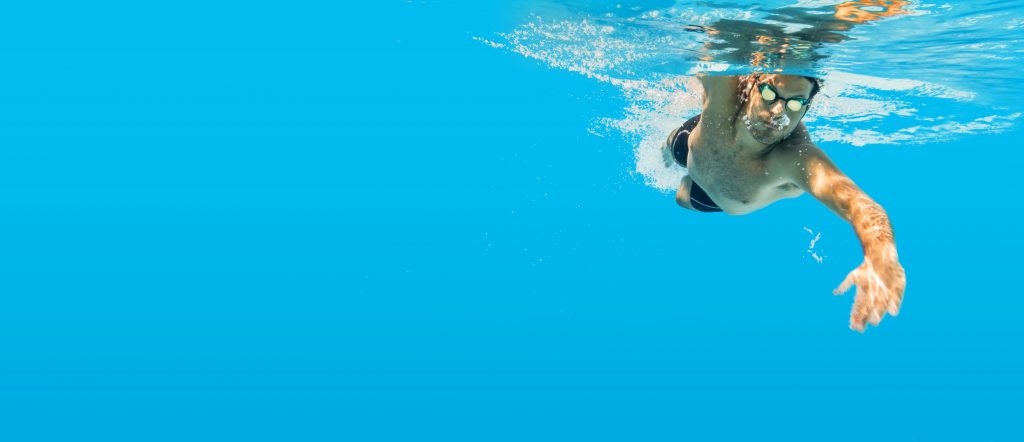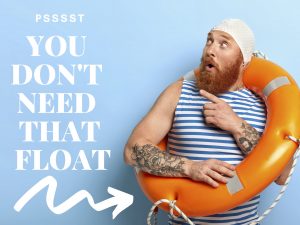
At One with the Water, we use three overarching principles in our guided, professional swim coaching. Harmony, inclusion, and mastery. Harmony, in particular, is our gentle approach empowering all students to feel safe and comfortable in the water. Statistics show just how necessary that principle is.
According to the CDC, approximately two-thirds of American adults are afraid of deep, open bodies of water and 46% are afraid of the deep end of a pool and 37% of Americans self-report being unable to swim. In order to even begin to overcome a fear of the water, it is our job as coaches to demystify the water, both explaining and teaching the properties of buoyancy and what happens when it is properly applied.
Buoyancy is a force in physics that is driven by Archimedes’ principle – fluid exerts a buoyant force, (opposing apparent gravity) on an immersed object that is equal to the weight of the displaced fluid. It is driven by the average density of the object, so simply translated, if the density of the object is lower than the water, it floats. Additionally, buoyancy is not affected by depth, so The buoyancy of the human body is the same in deep water as it is in shallow water.
 Based on the above principle, we know floating is attainable in water, but we also know due to the varied composition of individual bodies (fat versus muscle and bone) that we each have a unique density. To complicate matters, humans, as a rule, are not symmetrical objects.
Based on the above principle, we know floating is attainable in water, but we also know due to the varied composition of individual bodies (fat versus muscle and bone) that we each have a unique density. To complicate matters, humans, as a rule, are not symmetrical objects.
So how do we maximize our buoyancy, learn to float, and take the first steps in becoming One with the Water? We do it by teaching balance.
Teaching balance.
Balance is the most important concept in swimming and the first step of our teaching progression. To build good swimmers, the first thing that you need to learn is body balance.
First, we position the whole body on the surface with your head in a neutral position and legs on the surface, not sinking behind them. (The back of the neck needs to be elongated, the face is in the water and eyes are looking down.)
Second, it’s important in learning this technique to know there are two main points on the body for swimmers
- Center of buoyancy (chest)
- Center of mass (hips)
Failure to keep the hips and head in line will result in hips and legs sinking. This, in turn, causes swimmers to bend their knees to kick, creating an undesirable vertical body line and for new swimmers, a panicking feeling as their lower body sinks.
So what should you do to keep the hips and chest on the surface?
- Kick your legs. This will help bring hips up towards the surface and result in good hip position
- Press your chest down. This will force the lower body, hips, and legs to move towards the surface
- And finally, put more weight in front of your chest/body. This is achieved by keeping one or both arms in front of your body.
Register today for premium swim lessons.
Don’t let a misguided belief that you can’t float drive your fear of the water. We are trained in helping both children and adults overcome their fears to become One with the Water. Sign up for your premium lessons today.
Molly is a member of our creative team, mom of four water-loving babies, and a fierce advocate for CPR training and really early swim instruction.
